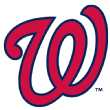Ranking the worst current contracts on all 30 teams
The overriding issue this offseason in MLB is money. The owners are hoarding it, players want a larger slice of it and Bryce Harper and Manny Machado are still waiting for a big pile of it. The lack of movement in free agency has become a controversial issue, with players such as Sean Doolittle and Evan Longoria, among others, voicing their concerns. A labor shutdown looms in the distance when the current collective bargaining agreement expires after the 2021 season.
It’s easy to understand the perspective of the owners and management. Here’s a list of 15 players, all of whom were among the 40 highest-paid players in 2018: Miguel Cabrera, Yoenis Cespedes, Albert Pujols, Felix Hernandez, Jason Heyward, Yu Darvish, Jordan Zimmermann, Hanley Ramirez, Johnny Cueto, Adrian Gonzalez, Ian Desmond, Jacoby Ellsbury, Chris Davis, Homer Bailey and Troy Tulowitzki. Those players made a combined $361.7 million in 2018, about 8.5 percent of all money spent on payroll — and were worth a combined minus-1.1 WAR.
Many of those names will appear on the list below of the worst contracts for each major league team. This group of one-time stars and superstars were collectively replacement level performers this past season. This is what drives (or perhaps more accurately stalls) free agency these days: the fear of the bad contract. You can go back to any offseason and look at the list of the biggest free-agent contracts. How many of those would teams still agree to today?
2017-18 | 2016-17 | 2015-16 | 2014-15 | 2013-14
Don’t feel too bad for the poor billionaires, however. They benefit from underpaid labor for star players at the beginning of their careers, and even though overall revenue increased in 2018 (by $300 million, according MLB deputy commissioner Dan Halem), player salaries decreased $18 million, the first drop since 2010.
Nobody wants to give out that big contract to the free agent who underperforms, gets injured or simply grows old too soon. Of course, last time I checked, you don’t win any awards just because you don’t have any bad contracts on your payroll. So, here we go, the worst contract for each team, ranked from most to least onerous:
 1. Baltimore Orioles: Chris Davis (4 years, $92 million)
1. Baltimore Orioles: Chris Davis (4 years, $92 million)
Davis’ 2018 season goes beyond description and the historic nature of it — and the four years remaining on his contract — put him in the top spot. Davis hit .168, struck out 192 times in 522 plate appearances, and Baseball-Reference pegged his value at minus-2.8 WAR, which somehow ranks only seventh worst among position players since 1950. Given that his OPS has declined from .923 to .792 to .732 to .539 the past four seasons, the odds of a comeback appear slim.
 2. Detroit Tigers: Miguel Cabrera (5 years, $154 million)
2. Detroit Tigers: Miguel Cabrera (5 years, $154 million)
The problem with the Cabrera contract is simply the total dollars for a player who has been injured the past two seasons (two herniated discs in his back in 2017, ruptured biceps in 2018). Sure, there is hope of a comeback for one of the best hitters in the game’s history, but he turns 36 in April, and he’ll be making $32 million per year at ages 39 and 40.
Which stars of tomorrow are tearing up the minors today? Keith Law ranks the top 100 prospects in baseball. Nos. 1-50 | 51-100 | Complete prospect coverage
 3. Los Angeles Angels: Albert Pujols (3 years, $87 million)
3. Los Angeles Angels: Albert Pujols (3 years, $87 million)
Pujols has been a below-average hitter the past two seasons with a .243/.287/.397 line. That’s below average among all hitters, not just first basemen and DHs. The Angels have Shohei Ohtani to DH once he returns from Tommy John surgery and also signed Justin Bour, so it’s not even clear how much Pujols will play in 2019. One note about the Pujols contract: A few days after signing Pujols (and C.J. Wilson), the Angels inked a 20-year TV deal worth an estimated $3 billion. While the Pujols/Mike Trout era has included just one playoff appearance, one can argue Arte Moreno has still benefited greatly from signing Pujols. In the end, the owners always win.
 4. San Diego Padres: Eric Hosmer (7 years, $123 million)
4. San Diego Padres: Eric Hosmer (7 years, $123 million)
Hosmer has had a weird “he’s good every other year” thing going on for his career, so this isn’t discounting the possibility that he’ll be better in 2019 and the future. But even his good seasons weren’t so good that a team — especially a small-market one like the Padres — should have made him the franchise player with a $144 million contract. Even accounting for intangibles like leadership or the “this proves we’re trying to win” factor, this deal was a complete misfire by Padres management.
 5. San Francisco Giants: Johnny Cueto (3 years, $70.4 million)
5. San Francisco Giants: Johnny Cueto (3 years, $70.4 million)
Cueto is hardly the only choice here — there are several reasons the Giants had one of the highest payrolls and still lost 89 games (and 98 the year before). Cueto had Tommy John surgery in August, so there’s a chance he misses all of 2019 or just makes a few starts at the end of the season. After that? Who knows.
 6. Chicago Cubs: Jason Heyward (5 years, $118.5 million)
6. Chicago Cubs: Jason Heyward (5 years, $118.5 million)
I know Cubs fans would put this No. 1. It’s not. Heyward isn’t as useless as some of the players listed here, but the length of the deal and the remaining dollars certainly are an issue. He eats up a large chunk of the payroll, and that could have ramifications down the road — say in 2022 when Kris Bryant and Javier Baez become free agents. Heyward’s defensive metrics, while still positive, dropped along with his offensive production last year, and that’s where a lot of his value comes from. Look, don’t feel bad for the Ricketts family or even Cubs fans. They’ve benefited from the cheap labor of Bryant and Baez, and Heyward and the fans will always have 2016 — no matter what happens the next five years.
 7. New York Yankees: Jacoby Ellsbury (2 years, $47.2 million, including $5 million buyout)
7. New York Yankees: Jacoby Ellsbury (2 years, $47.2 million, including $5 million buyout)
My take is this deal — essentially dead money, unless Ellsbury actually makes the team as a backup outfielder after missing all of 2018 — is worse than the $270 million owed Giancarlo Stanton over the next nine seasons. Sure, Stanton disappointed Yankees fans with a mere 38-homer, 4.0-WAR season, and there is obvious risk that the back end of his contract is bad, but he’s entering his age-29 season and should still have several big seasons in him. Would the Yankees like a re-do and gamble instead on Bryce Harper? Maybe. But I know they’d want a re-do on the Ellsbury contract.
 8. Toronto Blue Jays: Troy Tulowitzki (2 years, $37.5 million)
8. Toronto Blue Jays: Troy Tulowitzki (2 years, $37.5 million)
The once-great Tulo didn’t play at all in 2018 and the Jays released him after the season, with the Yankees picking up $555,000 of his 2019 salary. The Jays will be responsible for the $14 million owed him in 2020, plus the $4 million buyout. That figure could climb even higher: His salary could go up $6 million based on MVP voting. The Jays will also be paying Russell Martin $16.4 million to play for the Dodgers.
 9. Colorado Rockies: Ian Desmond (3 years, $40 million, including $2 million buyout)
9. Colorado Rockies: Ian Desmond (3 years, $40 million, including $2 million buyout)
Desmond’s five-year, $70 million deal was widely panned from the get-go and has been a disaster for the Rockies, who have won a wild-card game the past two seasons nonetheless. In fact, you can argue that Desmond’s contract is worse than dead money for Ellsbury or Tulowitzki since he has been worth minus-1.7 WAR the past two seasons — worse than replacement level. After playing first base in 2018, the new plan apparently has him playing center field in 2019. Hmm.
Always Late with Katie Nolan is a late-night sports comedy show covering the big (and small) stories of the week. Watch on ESPN+
 10. Miami Marlins: Wei-Yin Chen (2 years, $42 million)
10. Miami Marlins: Wei-Yin Chen (2 years, $42 million)
Here’s a prime example of why front offices have been so reluctant to hand out big money in free agency the past two winters. Chen was a good-not-great starter with the Orioles, signed an $80 million contract with the Marlins of all teams, and has gone 13-18, 4.75 in three seasons with them.
 11. St. Louis Cardinals: Dexter Fowler (3 years, $49.5 million)
11. St. Louis Cardinals: Dexter Fowler (3 years, $49.5 million)
OK, last season was an unmitigated debacle as Fowler hit .180/.278/.298 for minus-1.4 WAR. He’s not guaranteed a starting job in 2019, with Tyler O’Neill and Jose Martinez both capable of playing right field (or, in Martinez’s case, faking it). I’m not convinced Fowler is washed up, but he’ll be 33, and that’s a scary age when it comes to outfielders.
 12. New York Mets: Yoenis Cespedes (2 years, $58.5 million)
12. New York Mets: Yoenis Cespedes (2 years, $58.5 million)
Yes, I’d rather have Robinson Cano for five years and $100 million (the Mariners will pay him an addition $20 million) because Cano at least is still a good player. Cespedes will miss a large chunk of 2019 after surgery on both heels, and we don’t know when he’ll come back or whether he’ll even be effective. For a four-year, $110 million deal, the Mets have so far received 119 games and 3.0 WAR … and a salary chewing up a portion of the payroll that could have gone to Bryce Harper.
 13. Washington Nationals: Stephen Strasburg (5 years, $138.3 million) or Patrick Corbin (6 years, $140 million)
13. Washington Nationals: Stephen Strasburg (5 years, $138.3 million) or Patrick Corbin (6 years, $140 million)
Take your pick. Strasburg’s deal includes a ton of deferred money, and he’ll make $45 million in 2023, when he’s 34. That’s mostly an accounting trick, although perhaps one that benefits a 92-year-old owner. Corbin’s deal also is backloaded as he’ll make $12.9 million this season and $35.4 million in 2024. Anyway … Strasburg certainly is effective when he’s healthy, but he has qualified for the ERA title just once in the past four seasons, and Corbin will have to prove 2018 wasn’t a fluke. I don’t know, both deals just feel enormously risky in long-term value.
 14. Boston Red Sox: Pablo Sandoval (1 year, $23.6 million, including $5 million buyout)
14. Boston Red Sox: Pablo Sandoval (1 year, $23.6 million, including $5 million buyout)
David Price will earn $127 million over the next four years. He could have opted out but didn’t, knowing he wouldn’t touch that in free agency. So you could go with Price here, I guess, but the dude did have a 4.4-WAR season and just won the Red Sox a ring. Flags fly forever.
 15. Kansas City Royals: Ian Kennedy (2 years, $33 million)
15. Kansas City Royals: Ian Kennedy (2 years, $33 million)
Danny Duffy is under contract for three more years and $46 million, and both were bad in 2018, but Duffy has the better chance of bouncing back.
 16. Los Angeles Dodgers: Homer Bailey (1 year, $28 million, including $5 million buyout)/Yaisel Sierra (3 years, $20 million)/Hector Olivera (2 years, $9.3 million)
16. Los Angeles Dodgers: Homer Bailey (1 year, $28 million, including $5 million buyout)/Yaisel Sierra (3 years, $20 million)/Hector Olivera (2 years, $9.3 million)
This one was a little tricky. Bailey came over as part of the Yasiel Puig/Matt Kemp trade and the Dodgers immediately released him. In essence, the Dodgers exchanged the salaries of Puig and Kemp for Bailey and bought prospects Jeter Downs and Josiah Gray in the process. If those two pan out — or even if one does — it could be a good deal for the Dodgers. On the other hand, the Dodgers are paying these guys not to play for them in 2019: Bailey ($28 million), Kemp ($10.5 million), Sierra ($5 million) and Hector Olivera ($4.6 million) … or $48.1 million.
 17. Seattle Mariners: Kyle Seager (3 years, $57.5 million)
17. Seattle Mariners: Kyle Seager (3 years, $57.5 million)
The Mariners have several candidates to choose from, but these are mostly “wish we didn’t have them” deals rather than disasters. Felix Hernandez is in the final year of his deal and will make $27.8 million, they’ll pay Robinson Cano $20 million to play for the Mets, they took on $28 million owed Jay Bruce, and they’re paying Mike Leake a lot to be a No. 4 starter. I was always a little skeptical of Seager’s $100 million extension because of his lack of athleticism (he can’t run) and one-dimensional swing (he’s a dead pull hitter who has been hurt by the shift). He hit .221/.273/.400 last year, but did play with a fractured toe in the second half, so maybe he bounces back.
 18. Arizona Diamondbacks: Zack Greinke (3 years, $104.5 million)
18. Arizona Diamondbacks: Zack Greinke (3 years, $104.5 million)
After a less-than-stellar first season with the Diamondbacks, Greinke topped 200 innings the past two seasons with ERAs of 3.20 and 3.21 in a hitters park. His 10.3 WAR over those two seasons ranks eighth among starting pitchers, so the idea that Greinke hasn’t lived up to the contract doesn’t really add up. That said, if Greinke’s contract was viewed as a good deal, they’d have traded him this offseason — and that hasn’t happened.
 19. Texas Rangers: Prince Fielder (2 years, $18 million)
19. Texas Rangers: Prince Fielder (2 years, $18 million)
I’m not exactly sure where to rank this one. You can argue that paying Fielder $18 million over the next two years is a better option than paying Joey Votto at least $132 million over the next five. On the other hand, Votto might actually help you win a lot of baseball games over that time. Fielder will actually make $24 million each of the next two seasons — the Tigers will chip in $6 million per season and insurance covers another $9 million. If you prefer an active player, Shin-Soo Choo will make $42 million the next two seasons. I’m sure the Rangers would prefer not to be paying that for a 36-year-old DH, but at least Choo posted a .377 OBP/2.8-WAR season in 2018.
 20. Milwaukee Brewers: Ryan Braun (2 years, $40 million, including $4 million buyout)
20. Milwaukee Brewers: Ryan Braun (2 years, $40 million, including $4 million buyout)
Meh. Braun has been worth 1.2 WAR in 2017 and 1.1 in 2018. I’d rather gamble on Domingo Santana, whom the Brewers traded to the Mariners this offseason. Braun signed his megadeal in April 2011 and won the MVP award that season and finish second in 2012. Would the Brewers do the deal again? In a sense, those first two seasons paid for the entire contract. He was suspended in 2013 for “violations of the Basic Agreement and its Joint Drug Prevention and Treatment Program,” but at least he’s providing some value at the tail end of his deal.
 21. Cincinnati Reds: Joey Votto (5 years, $132 million, including $7 million buyout)
21. Cincinnati Reds: Joey Votto (5 years, $132 million, including $7 million buyout)
At $25 million per year and Votto entering his age-35 season, there is obvious risk here given his sudden decline in power last season, from 36 home runs to 12. His batting average fell from .320 to .284, although he still led the NL with a .417 OBP. I’m not completely comfortable with the back end of this deal, but getting on base is still an extremely valuable skill, and even in a bad year Votto was worth 3.5 WAR.
From the superteams to the surprises that surged into October, history tells us somebody won’t make it back. We examine who will be left out.
Whether the veteran star signs with St. Louis now or chooses to test the market next winter will tell us a whole lot about the state of free agency.
What happens when half of the league forgets to light its hot stove? Three weeks from spring training, we’re witnessing it in an offseason trend that’s here to stay.
 22. Cleveland Indians: Carlos Santana (2 years, $35.6 million, including $500,000 buyout)
22. Cleveland Indians: Carlos Santana (2 years, $35.6 million, including $500,000 buyout)
The Indians flipped one year of Edwin Encarnacion for two years of Santana, a higher overall payout but spread over two seasons. Santana hit 24 home runs and drew 110 walks for the Phillies last year, and he’s extremely durable (he has averaged 156 games the past six seasons). It’s certainly not a bad contract, although Santana wouldn’t get $35 million if he hit free agency this winter.
 23. Philadelphia Phillies: Jake Arrieta (2 years, $45 million)
23. Philadelphia Phillies: Jake Arrieta (2 years, $45 million)
Arrieta’s contract is interesting because of the unusual opt-out clause: He can opt out after 2019, but the Phillies can void that opt-out by exercising options for 2021 and 2022 at $20 million per year. Frankly, with the way Arrieta pitched in 2018 (3.96 ERA, declining K rate), neither scenario appears likely, leaving him (and the Phillies) with two years and $45 million remaining.
 24. Atlanta Braves: Darren O’Day (1 year, $9 million)
24. Atlanta Braves: Darren O’Day (1 year, $9 million)
The sidearmer came over last summer in the Kevin Gausman trade, although he was out with a hamstring injury and never pitched for Atlanta. He hasn’t matched his 2012-2015 peak in recent seasons but was solid with the Orioles in 2017 and could provide value to the Braves’ bullpen in 2019. And if not? No harm, no foul since it’s the last season of his contract. As an aside: With all these young players coming up to the Braves, it will be interesting to see if Liberty Media will be able to extend any of them to team-friendly deals like it was able to do with Freddie Freeman, Ender Inciarte and Julio Teheran.
 25. Oakland Athletics: Joakim Soria (2 years, $15 million)
25. Oakland Athletics: Joakim Soria (2 years, $15 million)
This was an interesting buy earlier this winter by the A’s. I’d prefer them to have spent that money on the rotation, but sometimes you have to get what you can afford, and the A’s have a recent history of signing relievers to deals like this — like Ryan Madson, whom they later flipped with Sean Doolittle to the Nationals for Blake Treinen and Jesus Luzardo.
 26. Houston Astros: Yuli Gurriel (2 years, $18.8 million)
26. Houston Astros: Yuli Gurriel (2 years, $18.8 million)
Gurriel is a solid regular, although his .291/.323/.428 is hardly special for a first baseman. Still, the money isn’t significant; you’d just prefer to pay a young, cheaper player for that level of performance. What will be more interesting is to see how the Jose Altuve contract plays out — six years, $154 million remain and his salary rockets up from $9.5 million in 2019 to $29 million in 2020. The contract runs through his age-34 season, and while his numbers were down last season, he played through a bad knee. If he stays healthy, he should provide enough value to make the contract a worthy investment.
 27. Minnesota Twins: Phil Hughes (1 year, $5.95 million)
27. Minnesota Twins: Phil Hughes (1 year, $5.95 million)
You can’t have any bad contracts when you don’t sign anybody to long-term deals. The Twins’ past two offseasons have been curious as they’ve had all kinds of payroll flexibility and yet have played it more conservatively. Anyway, the Twins are flushing $5.95 million down the toilet on Hughes, who is no longer on the roster. They’re not even paying the highest percentage of Hughes’ salary: The Padres will pay him $7.25 million not to pitch for them.
 28. Tampa Bay Rays: Kevin Kiermaier (4 years, $43.9 million, including $2.5 million buyout)
28. Tampa Bay Rays: Kevin Kiermaier (4 years, $43.9 million, including $2.5 million buyout)
Kiermaier’s defense is so good that even last year, despite playing just 88 games and hitting just .217/.282/.370, he was valued at 2.5 WAR (1.6 on FanGraphs, which historically has lower estimates on his defensive value). Even for a penny-pinching club like the Rays, I don’t think they mind this deal. There is some risk in that Kiermaier has missed significant time two seasons in a row, he could lose a step or two in the outfield as he gets older, and his bat was pretty useless in 2018.
 29. Chicago White Sox: Jose Abreu (1 year, $16 million)
29. Chicago White Sox: Jose Abreu (1 year, $16 million)
The only White Sox player signed beyond 2020 is Tim Anderson, but the money is minimal and the risk is mitigated by $1 million buyout clauses at the back end. So that leaves Abreu, who is in the final year of what was deemed a risky deal at the time, but has proven to be a worthy investment. He fell off in 2018, however, with a .265/.325/.473 line, worth just 1.7 WAR. He is also just one season removed from 4.7 WAR, so this final year could still prove to be a bargain if he rebounds.
 30. Pittsburgh Pirates: Gregory Polanco (5 years, $52.3 million)
30. Pittsburgh Pirates: Gregory Polanco (5 years, $52.3 million)
When the Pirates signed Polanco to a seven-year extension in April 2016, they thought they were getting a potential All-Star at a steep discount. That hasn’t happened, but it’s still a good contract for the Pirates even as Polanco has settled into a league-average performer. The risk is even lower than the numbers above indicate because the final two years are team options at $12.5 million and $13.5 million. Basically, Polanco has a good chance to outearn this contract, and there is no downside for the Pirates if he gets hurt or loses all his ability in a couple of years.